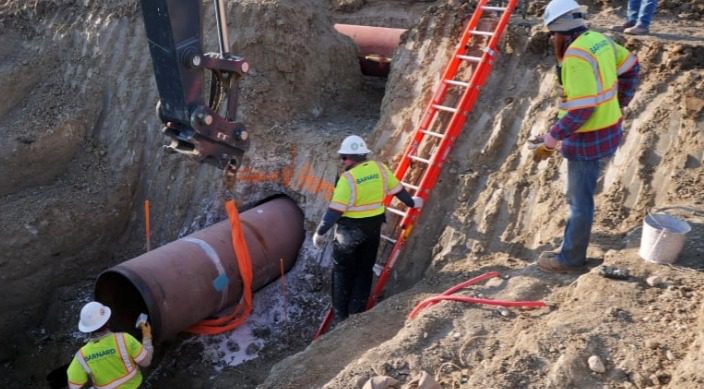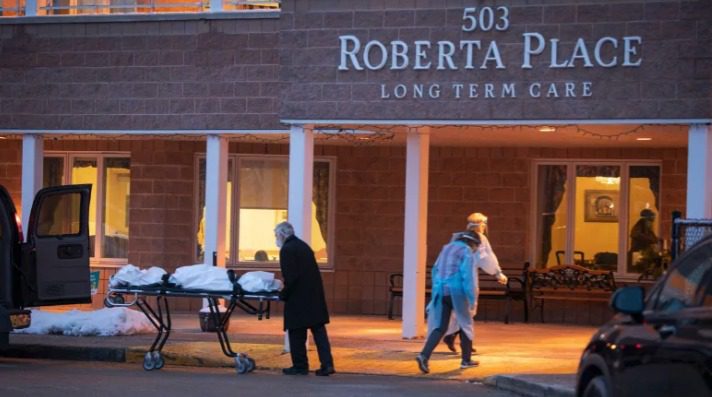Jason Kenney should finish mourning and move along. The more fuss he makes about the inevitable death of the Keystone pipeline only highlights his shocking waste of public funds on a long-shot bet.
For politicians on both sides of the border Keystone represented far more than a pipeline. President Joe Biden has conflated the slaying of this particular pipeline with his climate action stand. Jason Kenney bet billions of provincial taxpayer dollars on the pipe which would represent an economic rebound for Alberta's energy sector.
Keystone really doesn't fit the lofty goal of either of those goals. One pipeline won't appreciably reduce the U.S.'s enormous carbon footprint. One pipeline won't stop the continuing decline of fossil fuel.
Biden promised U.S. voters last spring he would kill Keystone if elected. Yet Kenney went ahead and bought a chunk of the pipeline for $1.5 billion in tax dollars, with a promise of a further $6 billion in loan guarantees.
Observers at the time were stumped on the logic of the Alberta investment.
Why would a premier who loves to chant "promise made, promise kept" with every campaign vow he fulfills think the president of the United States would not follow up on a key platform policy?
Was he that convinced Donald Trump would win the election?
His hyperbolic reaction to Biden's blocking of Keystone is bizarrely over-emotional.
"Look, we didn't start this dispute," Kenney told Global News. "It was the president, who on day one, decided to show disrespect for America's closest friend and ally."
And of course Kenney decided to pull his perennial foe Justin Trudeau into his mock fight, arguing Canada must at least ask for compensation and, failing that, start a trade war with the U.S.
It's as though in the absence of Trump, Kenney feels he has to fill some North American political hot air quota.
An Angus Reid poll released this week shows that, for 72 per cent of Albertans, the Keystone pipeline fight isn't over and Canada should be striving to get a reversal of Biden's decision. More than half of Canadians outside of the Prairies however said: 'let it go, already'.
The pollsters were in the field for a couple of days immediately after the U.S. inauguration day. So yes, even though the hope for Keystone to survive was always faint, there was still a palpable disappointment in Alberta that Biden wouldn't relent.
Now Kenney should take the lead, move past that let down and drop his ludicrous call for a trade war. His impotent fist shaking at the U.S. president is an embarrassment.
Alberta's economy is hanging by a thread and now is the time for some indication of whether the UCP is the right party to haul it out of the abyss.
Kenney needs to get over his personal stake in this fight. Yes, it is probably galling that his bet on a pipeline has ended in disaster while his federal rival Trudeau's TransMountain pipeline is forging onward.
At some point Kenney will also have to make a full accounting of how much the Keystone bet actually cost taxpayers. The government blocked NDP attempts in a legislature committee this week to reveal what kind of financial and risk advice it received before making the pipeline investment.
The final tab, likely to be at least $1 billion, should be revealed in provincial budget figures this spring.
Certainly past provincial governments have spent plenty on private sector boondoggles over the decades. But much of that money was spent in the interest of diversification of the economy. The shoring up of a pipeline project never fit that bill.
Even if there had been any chance of Keystone proceeding, there still would be valid questions of whether, in a time of fiscal constraint, the government is wise to plow this much money into the energy sector.
That billion dollar bet could have been put to better use building on other potential strengths in the Alberta economy, like the health tech or artificial intelligence sectors. Kenney needs to redirect all that energy he's putting into blustering against the U.S president into forging a viable future for his province.
Photo Credit: CBC News










